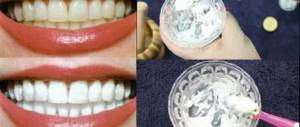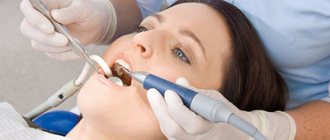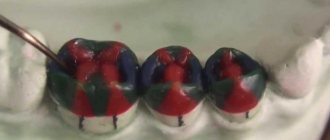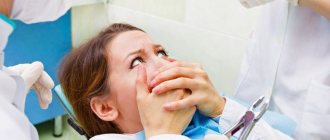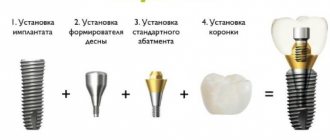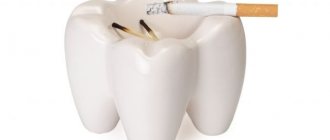Periodontal diseases currently represent one of the most important and complex problems in dentistry.
The current level of scientific knowledge makes it possible to fairly fully characterize the main nosological forms of diseases, their etiology and pathogenesis, and pathomorphological changes in periodontal tissues. In our country, much attention is paid to improving the organizational forms of treatment and preventive care for patients with periodontal pathology, developing and introducing into practice treatment methods and means based on fundamental research into the role and significance of leading etiological factors, and the prevalence of diseases among different age groups. Examination of a patient with periodontal pathology allows not only to correctly diagnose the disease, its severity, features of the clinical course, but also to determine the etiological factors and pathogenetic mechanisms of inflammatory or dystrophic
process in periodontium. In this case, it is possible to clarify the role of genetic factors, the influence of nutrition, ecology, occupational hazards and others... All these examination results create the basis for drawing up an adequate, comprehensive treatment plan using etiotropic, pathogenetic and symptomatic therapy.
Basic requirements for the treatment of periodontal diseases:
Treatment must be comprehensive. This means that the treatment plan should include methods and means aimed at eliminating the symptoms of the disease, normalizing the condition of periodontal tissues and affecting the patient’s body as a whole, i.e. the right combination of local and general treatment.
- It is necessary to strictly individualize complex therapy, taking into account the type, severity of the disease and the characteristics of the clinical course, as well as the general condition of the patient.
- A justified choice of methods and means of influencing the periodontal lesion and the patient’s body as a whole.
- Compliance with the correct sequence of application of various methods and means of complex therapy.
- During the period of remission, repeat courses of treatment to prevent exacerbation of the chronic process.
- Provide for rehabilitation measures.
- Medical examination.
Materials for splinting teeth
Doctors use various designs and materials for splinting: fiberglass tapes, aramid threads or special crowns/prostheses. Each of the materials has its own characteristics and advantages, so let’s look at them in more detail:
- Fiberglass (composite dental splinting) is the most common method, which involves preliminary preparation of the tooth surface (drilling a groove). A special fiberglass tape is placed in the furrow and filled with a photosensitive composite (glasspan splinting). The composite hardens when exposed to light of a certain wavelength, forming a stable structure that reduces tooth mobility;
- Metal brackets (screw splinting of teeth) – involves fixing a special thread made of aramid fiber with subsequent strengthening with filling material, similar to composite splinting;
- Crowns and clasp dentures are used for severely loose teeth. They are made individually, taking into account the anatomical characteristics of a particular patient.
The choice of the optimal treatment method is determined by the dentist, taking into account a whole range of factors, including: the degree of development of the pathology, the anatomical features of the patient’s teeth and oral cavity, the presence of indications and contraindications for the procedure, etc.
Among the methods used in orthopedic dentistry, the following must be indicated:
- Selective when grinding.
- Temporary splinting.
- Orthopedic techniques.
- Reception of permanent splinting devices and prostheses.
- Direct prosthetics and splinting.
Orthopedic methods used to treat periodontal diseases can relieve inflammation, improve blood circulation and tissue trophism by eliminating pathological mobility, normalizing occlusal relationships, and relieving the traumatic effect of chewing pressure.
Methods
There are removable and non-removable splinting. Fixed is used for small blocks - no more than 4 teeth, if there are healthy supporting teeth at the edges. In this case, the tooth enamel is slightly undermined. A thin fiberglass, aramid or silk thread is placed in the grooves. The grooves are covered with a material that is not destroyed by light and matches the color of the teeth as closely as possible. Fixed splinting can be done in 1 visit to the dentist.
Removable is used in the absence of outer support elements, if you need to splint a block with more than 4 teeth. In the smile area, crowning is performed, and in the sagittal area, prosthetics are performed. If it is necessary to strengthen a large area or periodontal disease has affected several areas, a clasp denture is installed.
The theoretical basis for the application of these methods,
Confirmed by clinical observations, is as follows:
- With periodontitis, there is a violation of the histofunctional correlation of the tooth with surrounding tissues. Destruction of periodontal tissue leads to a decrease in the area of the ligamentous apparatus and the walls of the alveoli, a change in the topography of compression and tension zones under load, an increase in the specific pressure on the tissue, a change in the nature of the deformation of fibers and bone tissue due to a change in the direction of the spatial displacement of the tooth root.
- The dynamic function of chewing is changed, but is an additional factor in the influence of the external environment on periodontal tissue.
- There is a close connection between the chewing function and blood circulation in periodontal tissues.
- Changes in chewing functions cause a violation of histofunctional correlations in the tooth-periodontal system, manifested by circulatory disorders due to changes in vascular tone, the development of reactive and then stagnant hyperemia.
- The term “injury”, “overload” of the periodontium and “traumatic occlusion” should be understood as such a change in chewing functions when a tooth or group of teeth is exposed to an accelerated, time-drawn-out influence of the same type of chewing pressure, which causes an enrichment of vascular reactions.
- Pathological mobility of teeth in the initial stage of the disease is caused by tissue swelling and is enhanced by the destruction of the fibrous apparatus and periodontal bone tissue.
- Destruction of periodontal tissues significantly reduces their endurance, adds vertical load and is directed at an angle to the long axis of the tooth, reduces the level of adaptation and compensation.
Reasons for dental splinting
The main causes of tooth mobility include primary, secondary and combined chewing trauma. Let's look at them in more detail:
- Primary chewing injury - observed in patients who strongly clench their teeth during sleep. Excessive systematic pressure of the lower jaw causes disruption of the ligamentous preparation, which weakens the fixation of the teeth;
- Secondary chewing injury - observed in patients with partial dysfunction of the bone that fixes the ligamentous apparatus, which disrupts its function;
- Combined chewing injury is the most dangerous type, combining the problems of primary and secondary chewing injury.
Most patients turn to the dental clinic for help only after the appearance of severe symptoms, when there is increased tooth mobility - this significantly complicates the treatment process and reduces its overall effectiveness. If you notice the first signs of dental pathologies, immediately seek help from a dentist. The doctor will conduct a diagnosis, determine the cause of the problem and prescribe adequate treatment.
Selective grinding method.
Jenkelson's technique.
Indications:
Super contacts for:
- secondary deformation of the dentition with secondary
- partial edentia;
- pathological abrasion;
- periodontal diseases with tilting of teeth, rotation of teeth around an axis, formation of diastemas and three.
Syndrome of painful dysfunction of the mandibular joint.
Lack of physiological abrasion.
Selective grinding is carried out:
- After curettage, drug treatment and temporary splinting.
- Before flap surgery and open curettage (i.e.
- before surgery).
There are three classes:
1) buccal surfaces of the vestibular tubercles of the lower jaw,
vestibular - cutting surfaces of incisors and fangs;
2) oral surfaces of the palatine tubercles of the upper jaw;
3) buccal surfaces of the palatine tubercles of the upper jaw.
Selective grinding is carried out in 4-5 visits, depending on the supercontacts (if the contact is 2.5 mm in area, then 5 visits).
1 visit
Copy paper is placed on the upper jaw, while the lower jaw must be moved back - distal occlusion. Grinding is carried out using 3 classes of drop-shaped or flame-shaped burs, i.e. sharpen the hillock, but do not remove the hill itself. After this - retherapy, fluoride varnish, protective pastes.
2 visits
In 3-5 days to a week. Solve supercontacts on the lower jaw in central occlusion according to class 1, do not remove the cusps, but grind them to 45 degrees, increase the size of the equator circumference. Then - the canine and incisors on the vestibular side. Hard tissue can be removed along the cutting edge, depending only in one case, if one tooth is clearly lower than the other teeth. If a tooth is shortened, it will still come into supercontact.
3 visits
After 10 days, check the upper teeth in class 2 central occlusion.
4 visits
After 5-7 days, check the contacts in the central occlusion according to class 3.
5 visits
After 10-14 all three classes are checked. Polish hard tissues, always retherapy.
Temporary splinting
Splinting can be either temporary or permanent. Temporary is more common. It helps reduce mobility, significantly reduces the load on each tooth, and straightens the dentition. At the same time, a comprehensive treatment of the disease that has led to loosening of the teeth is carried out.
If mobility occurs as a result of mechanical trauma or impact, then over time the teeth will be strengthened again in their places, and the splint can be removed. If mobility occurs as a result of periodontal disease, then after proper treatment it will also be possible to achieve a lasting positive result, after which the splint can be removed without damage to the teeth.
The use of modern materials allows the splinting procedure to be carried out without damaging the enamel.
TIRES.
A splint is a device for immobilization (complete immobilization or significantly reduced mobility) of a group of teeth or the entire dentition.
Tire requirements:
- create a strong block from a group of teeth, limiting their movements
- in three directions: vertical, vestibule-oral, Medio-lateral (for anterior) and anteroposterior (for lateral)
- be rigid and firmly fixed to the teeth;
- do not irritate the marginal periodontium;
- do not interfere with medical and surgical treatment of the gum pocket;
- do not have retention points for food retention;
- do not create blocking moments of the movement of the lower jaw with your occlusal surface;
- do not interfere with the patient’s speech;
- do not cause gross disturbances in the patient’s appearance;
- making a splint should not involve removing a large layer of hard tissue from the crowns of teeth.
The decision on the need for splinting is made by assessing tooth mobility, which characterizes the functional state of the periodontium. With Virata 1/2 the length of the tooth root, the splinting plane is horizontal (mesiodistal and transversal direction). If 3/4 of the length of the tooth root is lost, horizontal and vertical splinting is performed. After splinting the valley, you should choose the type of stabilization - sagittal (within the lateral portion of the dentition), frontal (anterior portion), front-sagittal, parasagittal, along the arc, along the arc in combination with para-sagittal.
Periodontal diseases make orthopedic treatment difficult to varying degrees. Even in simple cases, for example, when restoring uncomplicated defects in the dentition, periodontal diseases lead to difficulties in choosing teeth to carry out the supporting and retention functions of the fixing elements of prostheses. When maintaining a full dentition with weakened periodontal tissue, orthopedic treatment involves splinting mobile teeth and combining them into a single block. More often it is necessary to simultaneously splint and restore the integrity of the dentition.
Orthopedic structures used during the complex treatment of periodontal diseases are presented:
- structures, are manufactured for
- therapeutic and surgical treatment - temporary;
- Permanent or long-term dentures.
Temporary splinting
Temporary dentures are made to restore defects in the dentition and restore existing teeth. The method of temporary splinting is used in the advanced stage of generalized and focal chronic periodontitis, less often during the period of exacerbation at the initial stage. Temporary splints are used throughout the entire period of complex treatment until a permanent device is applied. Temporary splinting allows you to eliminate the traumatic effects of pathological mobility and chewing function, i.e. eliminate one of the pathogenetic mechanisms that support hemodynamic disturbances in periodontitis. The splint ensures uniform distribution of chewing pressure between the periodontal teeth included in the splint, creates rest for the affected tissues and helps to increase the effectiveness of pathogenetic and symptomatic therapy.
Based on the vascular-biomechanical hypothesis, the use of a temporary splint makes it possible to break the pathogenetic chain of inflammation-blood supply-dystrophy-mastication function, which helps improve the trophism of periodontal tissues and relieve the inflammatory process. Carrying out gingivotomy and gingivectomy without anterior production of a temporary splint is unacceptable.
In case of generalized periodontitis, all teeth are included in the splint, providing immobilization along the arch. In case of focal periodontitis, the length of the splint is determined by the localization of the lesion and its relationship with the teeth in which the periodontium is not affected: the splint must necessarily include teeth without periodontal damage in the block.
Temporary splints are made of plastic.
There are Kappa splints, oral and vestibulo-oral multi-link. Kappa splints cover the occlusal part of the tooth crowns. Their use is associated with an overestimation of the occlusal height.
Plastic splints - mouth guards, reinforced with metal or mineral reinforcement and temporarily fixed, provide the best splinting effect, at the same time allowing you to restore defects in the dentition and improve the appearance of the patient.
Vestibular-oral splints (circular) cover only part of the vestibular surface of the tooth, do not interfere with the closure of antagonists and prevent the gingival margin from being visible.
The design that is often chosen is a removable partial denture with plate-shaped bent wire clasps. Such a prosthesis loosens the teeth of the clasps, does not eliminate occlusal trauma, and injures the marginal periodontium and the mucous membrane of the prosthetic bed. But such a prosthesis is cheap, easy to manufacture and can be repaired; various elements of therapeutic structures can be added to it - orthodontic elements, occlusal platforms, etc.
Such dentures are indicated in cases where the bite height is reliably fixed by several pairs of stable antagonist teeth and there are no signs of a reflected traumatic node.
The emergence of modern materials based on the use of adhesive technology makes it possible to solve the problem of splinting areas of the dentition in compliance with modern aesthetic requirements and directly during the patient’s appointment, without involving a lengthy laboratory stage. In some cases, new systems make it possible to solve the problem of replacing single defects.
2 types of materials are used depending on their chemical composition:
- Based on the inorganic matrix GlasSpan (USA) and Fiber Splint (Switzerland).
- Based on an organic polyethylene matrix, Ribbond (USA) and Connect (USA), made from many very thin fibers D = 3-5 microns, woven together.
It is quite difficult to answer unequivocally which of the fittings is better.
There is evidence that polyethylene tires have better adhesion due to special plasma treatment - activation and are better infiltrated by the composite, which is important, since it allows the composite to create a more durable single block with the tape;
they have better biocompatibility with the tissues of the human body, since they consist of bioinert glass rather than plates.
The advantage is that they are available in a modification in the form of a hollow flagellum, which significantly expands the scope of application: flagellum optimal for splinting lateral teeth using the technique of creating a groove, for restoring a single defect in the dentition, or what is an alternative to intraradicular pins.
Care after splinting
Complex oral care after splinting mobile teeth is not required. It is enough to follow simple recommendations:
Do not use dental floss as this may damage the floss or denture.
Use an irrigator to clean hard-to-reach places.
Brush your teeth morning and evening, and after each meal, remove any leftover food.
Caring for clasp dentures is also not difficult. These are removable structures, but you need to remove them for cleaning no more than once a day. It is necessary to remove the clasp structure in order to thoroughly clean its internal surface. Otherwise, caring for dentures is no different from regular oral hygiene.
Constant splinting.
Permanent splints are used as therapeutic devices for immobilizing teeth for a long time. The patient uses such splints constantly.
Depending on the topography of the dentition defect, the prevalence and degree of periodontal destruction, permanent structures can be removable, non-removable and combined.
Fixed tires.
Fixed dentures are better than removable dentures, as they fix teeth in horizontal and vertical planes. They provide reliable strengthening of mobile teeth, forming a block of them that can withstand as a whole the horizontal and vertical forces that develop during chewing. They hardly interfere with speech, and patients quickly get used to them. The main problem in manufacturing is ensuring reliable fixation of the splint or prosthetic splint to the splinting tooth. The structure must be sufficiently rigid and fit exactly to the prosthetic bed, which also has a sufficient contact area. It is possible to increase the contact area and increase the stability of additional shear by introducing parapulpal or intracanal pins into the structure. The most reliable non-removable structure should be recognized as one whose fixing element is a solid-cast lined or unveneered crown (“solid-cast non-removable splints”).
The rigidity of a solid-cast coronal prosthetic splint depends on the material from which the structure is made.
The cross section of the structure (directly proportional) and its length (inversely proportional). The rigidity of the structure can be increased by increasing the cross section, for example, by creating a garland from the palatal (lingual) surface. To ensure the necessary rigidity, the design is complemented by a palatal clasp secured with T-latches. Grooves for the latches are formed in the area of the second premolars or first molars. The structure is placed on temporary cement for up to 3 months, and if during this time the structure is not rigid enough (this is manifested by chipping of the lining, decementing, exacerbation of the inflammatory process in the periodontium), then it is necessary to redo the structure.
Currently, the indications for the use of metal-ceramic structures are expanding and metal-ceramic prostheses can be used for mild to moderate periodontitis. A number of positive properties have been noted in metal-ceramic prostheses:
- The biological inertness of ceramics (unlike plastic) eliminates injury to the marginal periodontium;
- On the glazed surface of metal-ceramic dentures, conditions for plaque formation are much less favorable.
The scope of application of fixed structures is limited to included and defects. The supporting tooth must be sufficiently stable and have sufficient bone support. Otherwise, the manufacture of a removable splint (clasp) is indicated. It reliably splints the dentition in a horizontal plane and provides any kind of stabilization of the dentition. The open marginal periodontium of the existing teeth allows one to avoid trauma to the gums during the use of the prosthesis. The disadvantage is that solid clasps alone are not enough to fix the tooth in the vertical direction. This problem can be solved with the help of hybrid prostheses, i.e. prostheses, the design of which contains both clasp fixing elements and locking elements (for example, rigid clamps, telescopes). Clasp dentures with claspless fixation require the manufacture of anchor crowns, due to which the entire structure becomes a combined removable (fixed) denture.
Possible complications
Splinting rarely causes complications. These arise for 2 reasons - an allergy to the components from which the splint is made, and due to poor quality of the procedure. Sometimes the patient is the culprit if he chooses the materials with the lowest cost rather than the appropriate ones.
But still, there is a certain group of possible negative consequences:
- Injury to soft tissues due to mobility of the structure;
- Pulpitis if the pulp chamber is damaged during installation, or the splint passes in close proximity to it;
- Deterioration of tooth enamel if the patient eats food that is too hot or too cold, or if the splint is made of materials that change volume due to temperature fluctuations;
- Itching and discomfort if the patient has sensitive enamel, or professional cleaning was carried out the day before installation;
- Inflammation, suppuration, and sometimes the formation of a fistula if the gum pockets are not cleaned properly.
Important! During pregnancy, as well as hormonal imbalance in women and men, an allergy to the splint material can spontaneously occur due to changes in the secretion of the endocrine glands and changes in blood composition.
Similar articles
- Installation of a stump tab on Starokachalovskaya
- Get professional teeth cleaning at Starokachalovskaya
- Wisdom tooth removal
- Crowns for teeth in Northern Butovo
- Install veneers
Removable tires
The splinting properties of removable splints are provided by various combinations of continuous support-retaining and reversible clasps, as well as different shapes of occlusal pads. Their spread was facilitated by the development of parallelometry techniques, precision casting on refractory models, and the use of cobalt alloys and precious metal alloys.
Removable splints can be used to splint one group of teeth or the entire dentition. When immobilizing the front teeth, it is advisable to bring the splint to the premolars, and when splinting the lateral teeth, to the canines.
Removable splints can be included in the design of the arch prosthesis as its integral part. These are prosthetic splints:
1) continuous clasp type tire;
2) splint guard;
3) a single splint for the entire dentition.
Materials
The modern market for dental materials and accessories is simply replete with a variety of materials for splinting. Each doctor has his own favorite material, which is most often used, depending on the condition of the patient's teeth. We will name only the most popular among dentists:
- direct splinting material “ANGELUS INTERLIG”, created on the basis of fiberglass, is used for dental restorations, strengthening, and fixation of implants;
- “Vladmiva Armosplint” set consisting of reinforcing glass fiber, wetting liquid, adhesive, primer, liquid composite and etching gel; used for coronal and intracoronal fixation of mobile teeth, for fixation of teeth in case of traumatic dislocation;
- Glasspan material, which is used for splinting using the glasspan method, consists of a flexible ceramic system that is compatible with all types of dental materials.
Depending on the cause, as well as the condition of the patient’s teeth, the doctor selects the most suitable material and method of splinting. It should be borne in mind that a method that is ideal for one patient may not be suitable for another. And if your friend’s doctor installed a temporary splint, but advised you to have a permanent one, this does not indicate the doctor’s incompetence - most likely, you and your friend have completely different diseases, even if their symptoms are very similar in appearance.
Print Email
Comparative assessment of removable and non-removable splints.
Both types of tires have positive and negative properties.
The positive properties of non-removable tires include:
1) their ability to provide blocking of the system in three directions: vertical, transversal, mediodistal;
2) leaving the gingival pocket open (with the exception of a block of full crowns), making it accessible for medical and surgical (curettage) therapy;
3) patients quickly get used to non-removable splints, and phonetic disorders occur rarely and are quickly eliminated without the help of a doctor.
Negative properties of fixed tires
1) the need for tooth preparation, accompanied by severe trauma to enamel and dentin;
2) the use of pin splints involves the removal of pulp; when filling canals, it creates a danger of developing apical periodontitis;
4) fixed splints are difficult to apply when there is a fan-shaped divergence of teeth;
5) splined busbar structures are fragile and break along the soldering line, decementing occurs;
6) non-removable splints worsen oral hygiene.
The splinting properties of permanent splints are provided by clasps and occlusal pads. They create immobilization in only two directions: vestibulo-oral, mediolateral (for anterior teeth) or mediodistal (for lateral teeth).
These splints do not always create fixation in the vertical direction.
Removable splints are easy to clean and less disruptive to oral hygiene. Violation of aesthetics
minimal.
The advantage is the ability to use them to prevent functional overload of the periodontium, with defects in the dentition with signs of periodontal disease, but without pathological tooth mobility.
The production of removable splints is carried out in the laboratory; manipulations in the patient’s oral cavity are reduced. This also applies to the advantages of this type of splinting.
The disadvantages of such tires include the fact that their production requires great precision: the mandatory use of parallelometry and precision casting on fire-resistant models. If the accuracy of applying and removing the splint is violated, the periodontal tissue of individual teeth may be overloaded.
Indications for including teeth in a splint.
Indications for inclusion of teeth in a splint depend on the amount of atrophy of the dental alveoli and the form of periodontal disease. Teeth with grade III mobility must be removed. It is necessary to remove teeth with II degree mobility if there is atrophy of more than 2/3 of the hole. Teeth with degree I mobility due to atrophy and sockets of more than half are removed during periodontitis, and in case of periodontal disease they must be included in a splint. In case of chronic periapical changes, teeth with degree I mobility and well-filled root canals are subject to splinting. In case of poor obturation of the root canal, the tooth can be included in the splint only if there are no changes in the apical periodontium and a calm clinical course (no pain before treatment and 3-4 weeks after it). In case of exacerbation of chronic periodontitis, the tooth is not included in the splint. Teeth with II degree mobility and chronic peaks and lesions around them, even if the canals are well filled, are NOT subject to splinting. The presence of a fistula tract is a contraindication for including a tooth in a splinting block, even if the canal is sealed.
Advantages
- Fixation of mobile teeth for the required period (permanent or temporary).
- Effective in complex therapy of periodontal diseases.
- Redistribution of chewing load on healthy teeth.
- Comfort after installation. Regardless of the type of splint, after its installation the patient does not feel discomfort. He can lead a normal life. After splinting, no complex oral care is required.
- The aramid splint can be easily removed. Even if the thread was fixed in the groove, it can be easily sealed after removal.
- Aesthetics. The aramid thread is fixed on the inner surface of the teeth, so it is absolutely invisible. Artificial crowns of clasp dentures are practically no different visually from natural teeth.
Main types of splinting.
The direction of pathological mobility of any tooth is always cut out and depends on its location in the dental arch. For molars and premolars, the lines of their mobility lie in almost parallel planes, for incisors and canines - in planes located at an angle to each other. The best result of splinting is achieved if the splint unites the teeth and the fracture lines lie in intersecting planes.
For the anterior group of teeth, a splint is used to unite the incisors and canines. This is anterior immobilization. It is convenient because, firstly, the periodontium of the canines is less affected and takes on part of the pressure, unloading the weakened periodontium of the incisors, and secondly, the unity of a group of teeth that have the same is restored; thirdly, the teeth are located in an arc, due to this Shinan has greater stability. Immobilization of teeth, in which the splint is located in the anteroposterior direction, is called lateral (sagittal). Lateral immobilization allows you to create a block of teeth that are resistant to forces developing in the vertical, transverse and anteroposterior directions. With the slightest degree of atrophy of the sockets, this is enough to reduce the functional load and obtain a therapeutic effect.
Indications for splinting teeth
The main indication for splinting mobile teeth is periodontal pathology. But the procedure can also be prescribed for other problems:
- Bite pathologies – leading to anatomical defects in the growth of teeth and causing their excessive mobility;
- Chronic periodontal diseases – causing bleeding gums and a gradual increase in tooth mobility;
- Gum pathologies – the presence of deep gum pockets contributes to the exposure of the necks and roots of the teeth, which leads to gradual loosening of the teeth;
- Hard deposits – contributes to the chronic destruction of dental and gum tissues, causing tooth mobility;
- Other pathologies – causing a decrease in the quality of fixation of teeth in a row.
Considering the specifics of the splinting procedure for periodontitis and other pathologies of the oral cavity, it also has a number of contraindications.
Splinting for injuries and jaw fractures
If the jaw is fractured, the surgeon examines the patient and orders an x-ray. If the diagnosis is confirmed, then urgent placement of a splint is prescribed. A fracture causes a displacement of the position of the bone and fragments. The doctor’s task is to quickly collect the fragments, focusing on the anatomy to avoid asymmetry.
Sequence of procedure:
- Antibiotic to prevent infection if the case is complex.
- Anesthesia.
- Installation of the retainer, connecting the damaged areas with ligature wire.
- Prescription of a liquid diet, wearing the structure for 1.5-2 months.
- Regular examinations until the end of treatment.
- Removing the tire.
For jaw fractures, ligature wire is most often used for splinting according to the Ivey method, as well as bimaxillary splinting according to Tigerstedt with an intermaxillary rubber traction and a supporting bandage.
Splinting for periodontitis
Splinting teeth for periodontitis is a necessary measure in case of severe mobility. Occurs when bone tissue is destroyed by more than 25% of the root length.
The disease visually manifests itself as exposure of the cervical region and roots. If you take an x-ray, bone atrophy will be visible in the image. As mobility increases, the rate of atrophy increases. If the disease is not treated, the inflammation will intensify.
Periodontitis is a dangerous pathology, the problem needs to be solved as quickly as possible. If the baby reports that his primary canine is loose, then there is no need to worry. And if an adult’s permanent teeth begin to move, then you should not put off going to the dentist.
Mobility of teeth in periodontitis occurs under the influence of load during chewing. The staggering units gradually change position, deviate to the sides, and fan out. To prevent negative consequences, it is necessary to install the tire faster.



